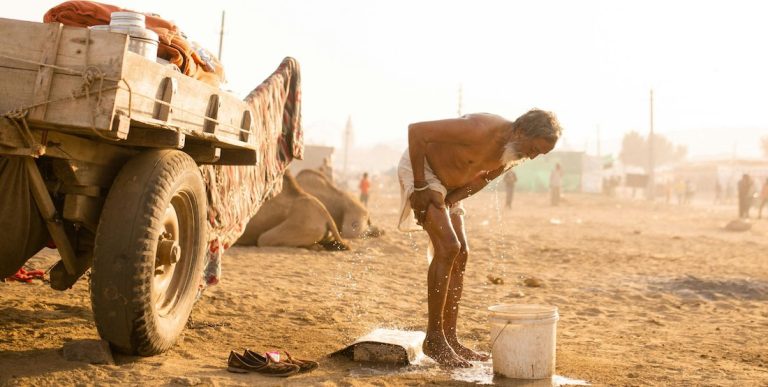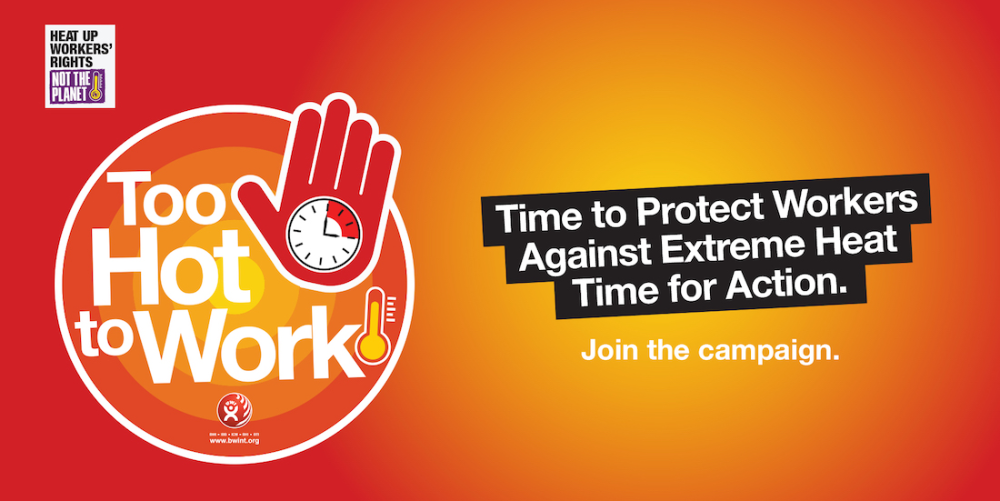
International Labour Organization reports devastating toll as European Union witnesses 42% surge in workplace heat deaths
New York, N.Y. – The escalating climate crisis is claiming a devastating human toll in workplaces across the globe, with extreme heat now killing nearly 19,000 workers annually, according to new data from the International Labour Organization (ILO).
The alarming statistics reveal that the European Union has experienced a 42% increase in heat-related workplace deaths since 2000, underscoring the urgent need for comprehensive safety reforms and climate adaptation strategies.
The I.L.O.’s comprehensive analysis, released in March 2024, paints a sobering picture of how rising global temperatures are transforming workplace safety into a matter of life and death. From construction sites in Phoenix to agricultural fields in Spain, workers are facing unprecedented thermal stress that current safety protocols were never designed to address.

Construction and Agriculture Bear Heaviest Burden
The construction and agricultural sectors account for the majority of heat-related workplace fatalities, with outdoor workers facing the greatest risk.
Heat stress occurs when the human body cannot adequately cool itself, leading to heat exhaustion, heat stroke, and in extreme cases, death. Workers performing physically demanding tasks in direct sunlight are particularly vulnerable, especially when temperatures exceed 90 degrees Fahrenheit with high humidity levels.
Dr. Catherine Miller, an occupational health specialist at Johns Hopkins University, explains that the human body’s cooling mechanisms become overwhelmed when ambient temperatures approach core body temperature. “When external temperatures reach 98.6 degrees Fahrenheit or higher, sweating becomes less effective, and workers can experience rapid deterioration in cognitive function and physical coordination,” Miller stated in a recent interview.
The I.L.O. data reveals that heat-related workplace deaths have increased by 23% globally since 2000, with developing nations bearing a disproportionate share of the burden. Countries in Southeast Asia, Sub-Saharan Africa, and parts of Latin America report the highest rates of occupational heat fatalities, often correlating with limited workplace safety regulations and inadequate access to cooling resources.

European Union Faces Unprecedented Challenge
The 42% increase in heat-related workplace deaths across the E.U. since 2000 represents a stark departure from the region’s historically temperate climate. Spain, Italy, and Greece have recorded the highest numbers of occupational heat fatalities, with agricultural workers and construction crews facing particularly acute risks during increasingly frequent heat waves.
The European Trade Union Confederation has called for immediate action, arguing that existing workplace safety directives are inadequate for addressing climate-related hazards. “Our workers are literally dying from heat that previous generations never experienced,” said Maria Gonzalez, spokesperson for the confederation. “We need emergency protocols that reflect the new climate reality.”
Germany and France have begun implementing innovative cooling strategies, including mandatory shade structures at construction sites and revised work schedules that avoid peak temperature hours. However, critics argue that such measures remain patchwork solutions to a systemic problem requiring continental coordination.

Economic Impact Extends Beyond Human Cost
The economic implications of heat-related workplace injuries and deaths extend far beyond immediate medical costs and compensation claims. Productivity losses due to heat stress are estimated to cost the global economy $2.4 trillion annually, according to recent World Bank projections. This figure encompasses reduced work capacity, increased absenteeism, and the long-term healthcare costs associated with heat-related illnesses.
Supply chain disruptions caused by extreme heat events further compound economic losses, particularly in industries dependent on outdoor labor. The International Monetary Fund projects that heat-related productivity losses could reduce global G.D.P. by up to 23 percent by 2100 if current warming trends continue unabated.
Small and medium-sized enterprises face particular challenges in implementing comprehensive heat safety measures, often lacking the resources for advanced cooling systems or flexible scheduling arrangements. This disparity creates a two-tiered system where workers at larger corporations may have better protection than their counterparts at smaller companies.
Technology and Innovation Offer Hope
Emerging technologies are beginning to offer solutions for heat-stressed workers. Wearable sensors that monitor core body temperature and hydration levels can provide early warning systems for heat exhaustion. Some companies have begun deploying cooling vests and portable shade structures that can be quickly assembled at work sites.
Artificial intelligence is being leveraged to predict dangerous heat conditions and automatically adjust work schedules. The National Institute for Occupational Safety and Health (N.I.O.S.H.) has developed mobile applications that calculate heat index values and recommend appropriate work-rest cycles based on environmental conditions.
However, technology alone cannot address the fundamental challenge of rising global temperatures. Climate scientists emphasize that meaningful progress requires both adaptation measures and aggressive greenhouse gas reduction efforts.

Regulatory Response Gaining Momentum
Several jurisdictions are implementing new regulations specifically designed to address heat-related workplace hazards. California has established the first comprehensive heat illness prevention standards in the U.S, requiring employers to provide shade, water, and mandatory rest periods when temperatures exceed specified thresholds.
The Occupational Safety and Health Administration (O.S.H.A.) is currently developing federal heat standards that would apply nationwide, though the rulemaking process faces significant political and industry opposition.
Labor advocates argue that voluntary guidelines have proven insufficient to protect workers from increasingly dangerous conditions.
International coordination efforts are also gaining traction, with the I.L.O. developing global standards for heat stress prevention. These guidelines emphasize the importance of comprehensive risk assessment, worker training, and emergency response protocols tailored to local climate conditions.
The path forward requires unprecedented collaboration between governments, employers, and labor organizations to develop effective solutions for protecting workers in an increasingly hot world. As global temperatures continue to rise, the stakes for workplace safety have never been higher, demanding immediate and sustained action to prevent further loss of life.
Global workplace heat deaths have reached nearly 19,000 annually according to the International Labour Organization, with the European Union experiencing a 42 percent increase since 2000. Construction and agricultural workers face the highest risks, while economic impacts exceed $2.4 trillion in productivity losses. New technologies and regulations offer hope, but comprehensive climate adaptation strategies remain urgently needed to protect workers worldwide.